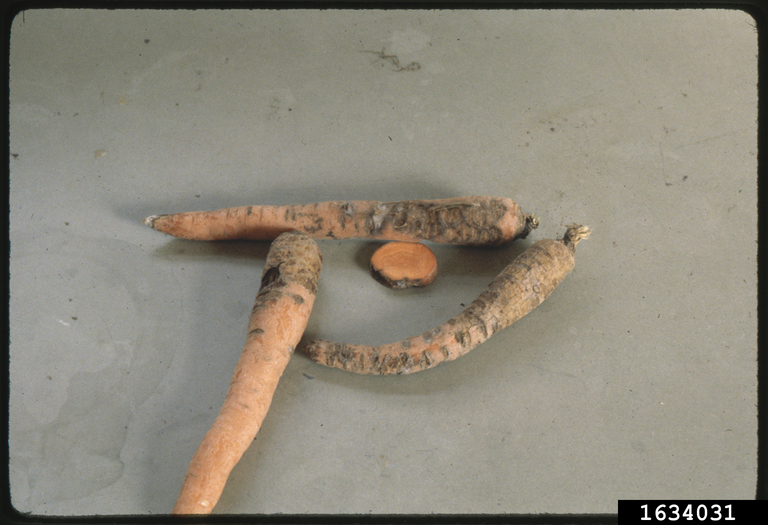
Bacterial soft rot and watery rot
gram-negative bacteria, Erwinia, Pectobacterium, and Pseudomonas
There are several types of fast-growing watery soft rots most commonly seen in stored carrots. Infection by bacteria soft rot enters the root via some sort of damage, such as bruising, cuts made at harvest or cutting into the root when trimming. Soft rot can also be introduced by cleaning carrots in infected wash water. As soft rot affected carrots break down in storage they produce a foul-smelling bacterial slime that oozes onto adjacent healthy roots.
Symptoms:
- As soft rot affected carrots break down in storage they produce a foul-smelling bacterial slime that oozes onto adjacent healthy roots.
- Handle carrots carefully to avoid root damage during harvest and storage.
- Trim carrot tops about 1 cm above the root. Do not cut into the root.
- Grow carrots in a sandy to loam soil and avoid excessive irrigation.
- Cool the carrots quickly after harvest. Avoid surface moisture on the carrots, especially at warmer temperatures.

